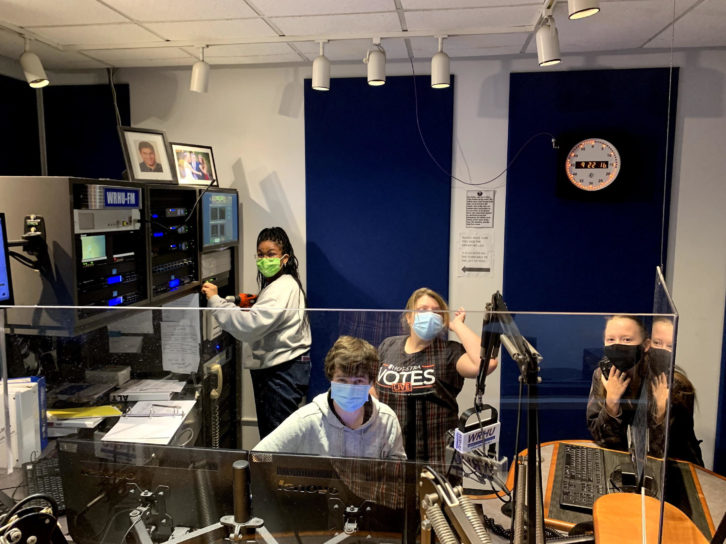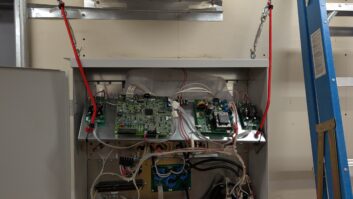The author is chief engineer of WRHU and also of Salem Media of NY.
Broadcast engineering has always been a unique corner of the radio and television industry. Engineers have to possess a wide variety of skillsets to keep their facilities running consistently and reliably, minimizing studio downtime and off-air events while also working with limited budgets and staff. It is a challenging position that is little understood outside of the business.
As broadcast technology and methodology has evolved over the past 100 years, supporting it has become very complex. An engineer for a radio group must be competent in RF transmission systems, content delivery, advanced IT and networking, machine repair and other related areas of technical expertise that are required to support a 24/7 broadcast operation.

For smaller organizations, this role is often expanded to include facilities management, logistics and building and vehicular maintenance as well.
With the rise of social media and OTT content, the position now requires an understanding of video technology, asset management and even camera systems, as almost all radio groups are looking to create and distribute video to supplement their traditional terrestrial offerings. As a result, broadcast engineers often function as a one-man band, simultaneously managing, developing and troubleshooting a variety of systems. As any working engineer knows, this can turn into a very complex, time-consuming process.
It is well known that the widespread consolidation of radio and television groups over the past 30 years eliminated a significant number of jobs in the industry. Technological advancement in broadcast automation means smaller radio groups in suburban markets no longer need to maintain a staffed 24/7 operation or have a chief engineer on staff. This eliminates the opportunity for high school and college students to “hang” at the local station, learning valuable skills and receiving mentorship from the senior station engineers.
In essence, major-market radio and TV has lost its “farm team,” which very often prepared personnel for opportunities in larger markets.
At the same time, digital giants like Amazon, Netflix and Hulu have lured a large chunk of engineering talent away from traditional radio and television organizations. Higher starting salaries, opportunities for growth, stock options and flexible work schedules have caught the interest of the usual “techie” grads who might previously have been enticed by terrestrial broadcasting.
As a result, the broadcast industry is finding itself with a shortage of engineering personnel, especially as older, experienced engineers are retiring or shifting into other, more profitable areas of media.
COVID-19 and the current employee shortage have only accelerated this shift. Major markets such as New York, Los Angeles, Chicago and Miami, once considered destinations for personnel, are all struggling to find support. Smaller markets often have only one or two local engineering resources to pick from in the region, leading to lengthy repair cycles, delayed studio builds, extended periods of dead air and unmanaged or unnoticed critical engineering issues. These problems often spiral into major financial and logistical headaches for owners and operators.
Real-world issues
As the chief engineer of Salem Media of New York, I see firsthand how these changes are affecting our local cluster.
In addition to acting as an origination point for Salem Radio Networks’ nationally syndicated “The Mike Gallagher Show,” AM 970’s “The Joe Piscopo Show” and the “Kevin McCullough Radio” program, our cluster generates many hours of weekly local programming, both audio and video. Audio and video content now comes from inside and outside the studio and has to be meshed together to form a high-level product, distributed both locally and nationally.
What used to be mostly centralized audio originating locally from a studio complex has become an audio and video octopus of sorts, with content coming in and out of the station 24/7, in various stages of process and production.
Luckily, the seasoned Salem team makes this entire process transparent to the listener and handles it with great efficiency. But at its core, it is extremely complex and requires training, talent and infrastructure to execute properly.
[Visit Radio World’s News and Business Page]
While there are many open engineering positions nationwide, it remains a major challenge to generate interest in broadcast engineering among young, smart technical folks, especially college grads majoring in television and radio.
Most college students don’t consider broadcast engineering as a career. The consuming nature of the job and the lack of a comprehensive vocational training program, along with exposure to large amounts of company IP and proprietary procedure, relegate it to a small, shrouded and often mystical area of the industry. Indeed, I’ve worked with many organizations that often refer to broadcast engineering as a “dark art,” due to the complexity of the work and the difficulty of finding qualified personnel. All of these factors make recruitment, performance and sustainability very difficult in almost all media markets.
But take heart. There is a solution.
Magical space
In addition to my responsibilities at Salem Media of NY, I am the chief engineer for Hofstra University’s radio station WRHU. Serving Nassau County and the New York city metro DMA since the 1950s, WRHU is no stranger to the broadcast industry, receiving three NAB Marconi Awards in the past six years, as well as multiple accolades for its service and commitment to educational broadcasting.
The station is part of the much larger Lawrence Herbert School of Communication (LHSC), which is a full-service institution, providing students training in Journalism, Media Studies, Public Relations, Audio-Radio, Television and Film.
As a student at the university back in the early 2000s, I was lucky enough to have the chance to hang out with the college station’s former Chief Engineers Joe Derosa and Marc Weiner. The WRHU engineering shift was always on Thursday nights, and the windowless, heavy wooden door to the technical office led to a magical space filled with rack-mounted hardware, blinking lights, bouncing meters and other fascinating technology unlike anything a young tech geek such as myself had ever seen.

Joe and Marc were experts in the field and never minded taking the time to speak with us students about broadcast engineering, science, math, astronomy or anything else that we were interested in or wanted to explore. The topics would range from string theory to the string cheese, and there was always a solution or answer to the questions presented. The sessions were informative, inspiring and informal, outside of the normal framework of the university academic structure, which made it all the more intriguing and engaging.
I’m sure this kind of experience is familiar to many other engineering folks who may be reading this. Many radio chief engineers traditionally get their initial exposure to the craft from older, more seasoned technical folks, either at college radio stations, small market clusters, ham clubs or engineering society meetups.
Mentorship and presentation, specifically at the university level, has always been powerful way to get students excited about career opportunities of which they may have otherwise been unaware. This kind of pre-professional development and exposure is one of the many benefits of a well put together school of communication and active local professional community.
At WRHU and the Herbert School, we have realized that Broadcast Operations and Engineering is an area of the business that is experiencing a major demand for employees contains tremendous opportunity for growth.
Over the last few years, my colleagues at the radio station and university have grown the size and scope of our regular Thursday night engineering sessions to respond to this need. “Tech Thursdays” has now become a destination for LHSC students interested in learning about all areas of BO&E.

Our sessions have ranged from training workshops that teach basic skills such as soldering and cable termination to broadcast hardware troubleshooting, systems design and transmission systems construction. Tech Thursdays also often features guest speakers and panels lead by industry experts.
Recent presentations included a deep dive into AM and FM transmission lead by MediaCo CTO Alex Roman and West Coast radio engineering and operational procedures presented by Salem Media of San Diego’s Chief Engineer Darnell Forde.
WRHU and LHSC student managers are also instrumental in the process, often leading discussions and training. Student technical engineers Ed Mabeza and Shayna Sengstock often come up with topics for discovery and have made themselves available for mentorship and guidance to younger students looking to get involved and grow.
Sengstock became interested primarily because of the Thursday night sessions, which she found out about via word of mouth. “I started fixing broken stuff at WRHU and found out I really enjoyed it. This led me to apply for the station student technical director position.”
They also plan to pursue careers in engineering. Mabeza recently concluded an internship program with WABC(TV)’s Engineering Department and is now working in an engineering capacity at Northwell Health. Sengstock works part-time for Connoisseur Media’s Long Island radio cluster and is looking to take on junior engineering duties at the company. She eventually wants to be a chief engineer for a major-market music station, like NYC Top 40 powerhouse Z-100.
In addition to our station technical workshops, students at the Lawrence Herbert School of Communication are actively trying to charter a Society of Broadcast Engineers student chapter on campus.

The station and the school are enthusiastic about it, and feel that the students could benefit tremendously working with the engineers and professional members of SBE-15, the New York chapter of the organization. Student membership in the SBE would provide station members greater opportunities for technical training via the SBE’s vast educational programs as well as professional certifications that are often looked for by hiring managers.
Ultimately, a major priority of the Herbert School and Radio Hofstra University is to help prepare a new generation of storytellers in the media industry, including the next generation of broadcast engineers to fill some of the personnel gaps that now exist in the media business. This is a mission that is important to Hofstra staff, administrators, faculty and students as they recognize a tremendous opportunity within the business for personal growth and professional success. The school and station are excited to use their facilities, staff and resources to help build a better future for the students.
As the classic saying in broadcasting goes, “Stay tuned, there’s much more to come.”







